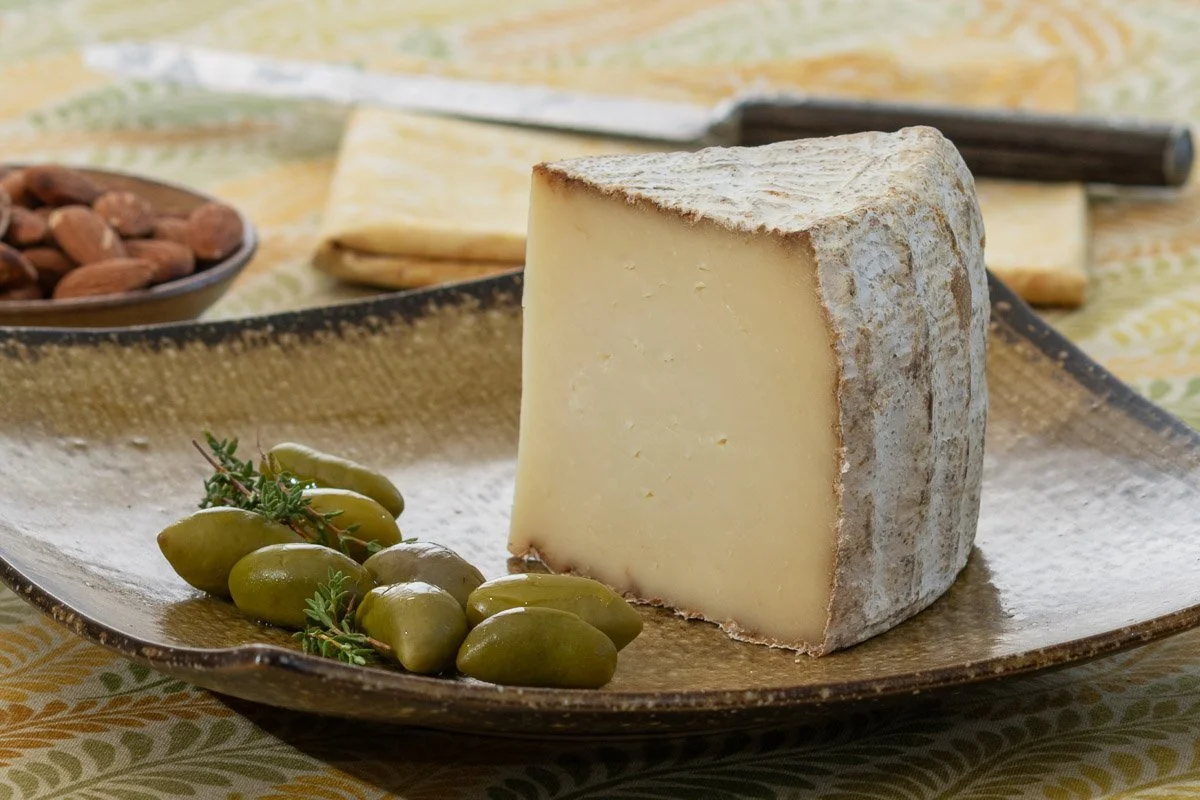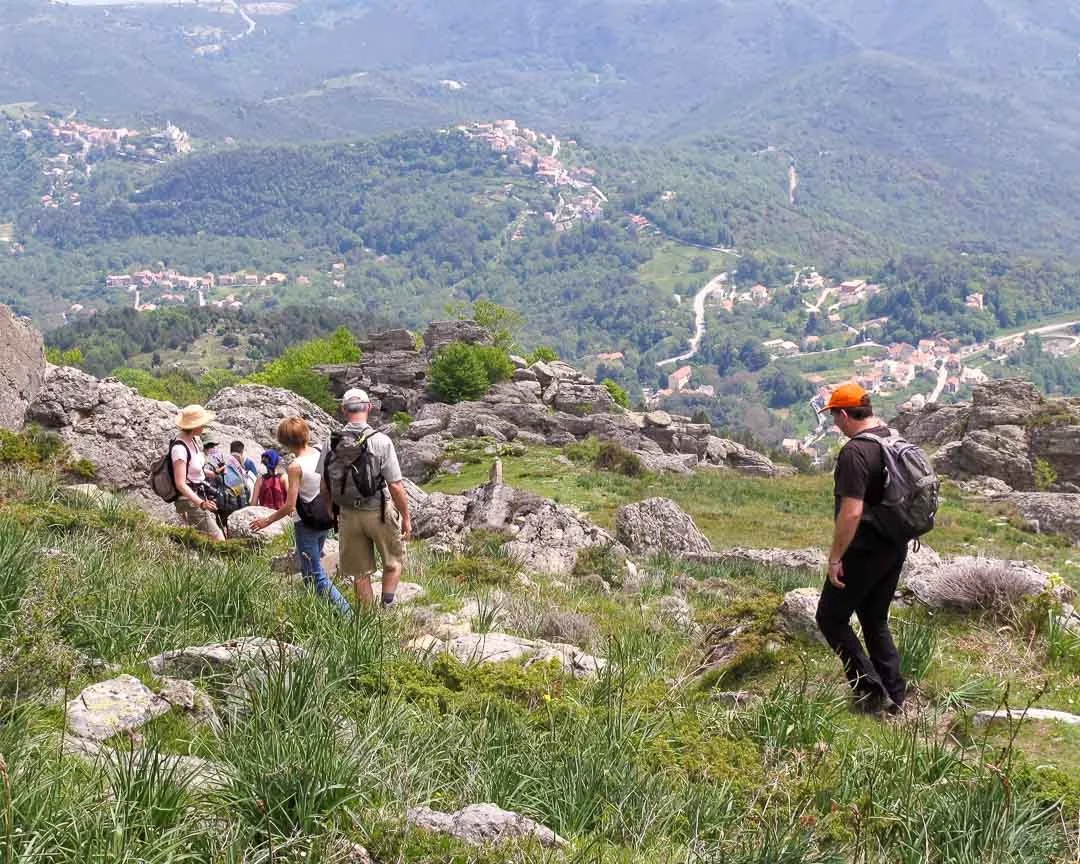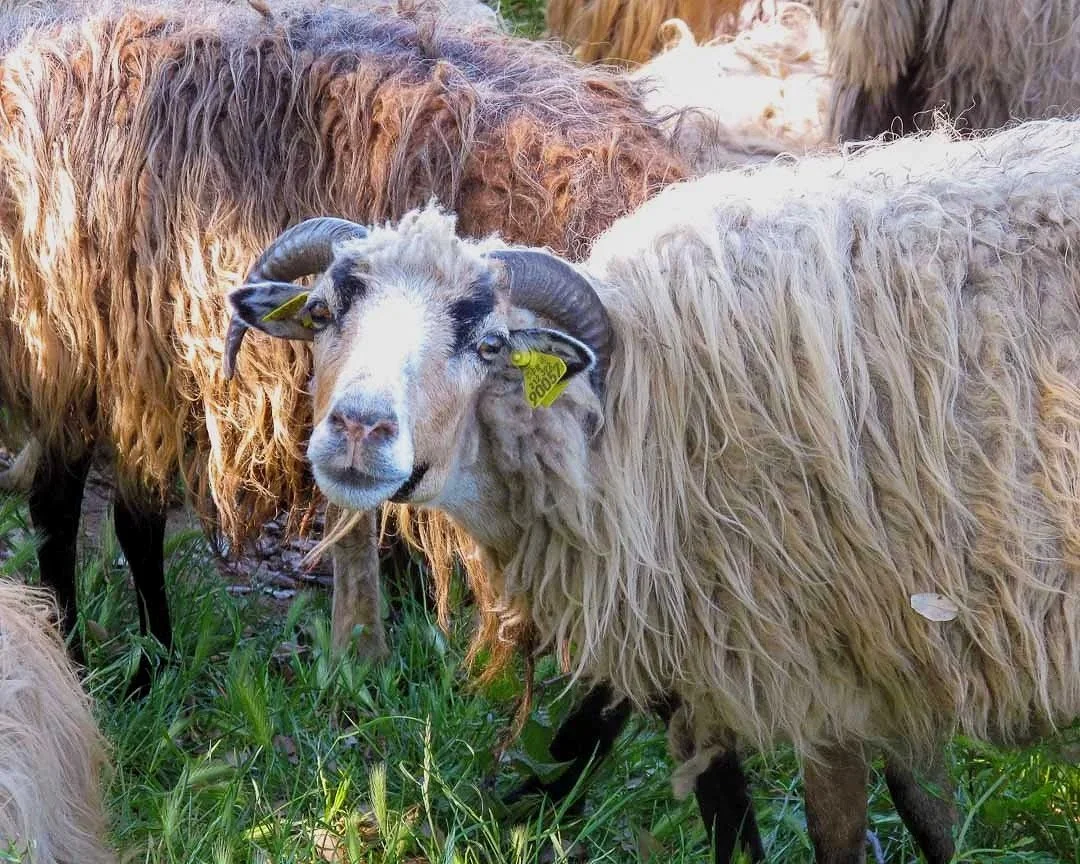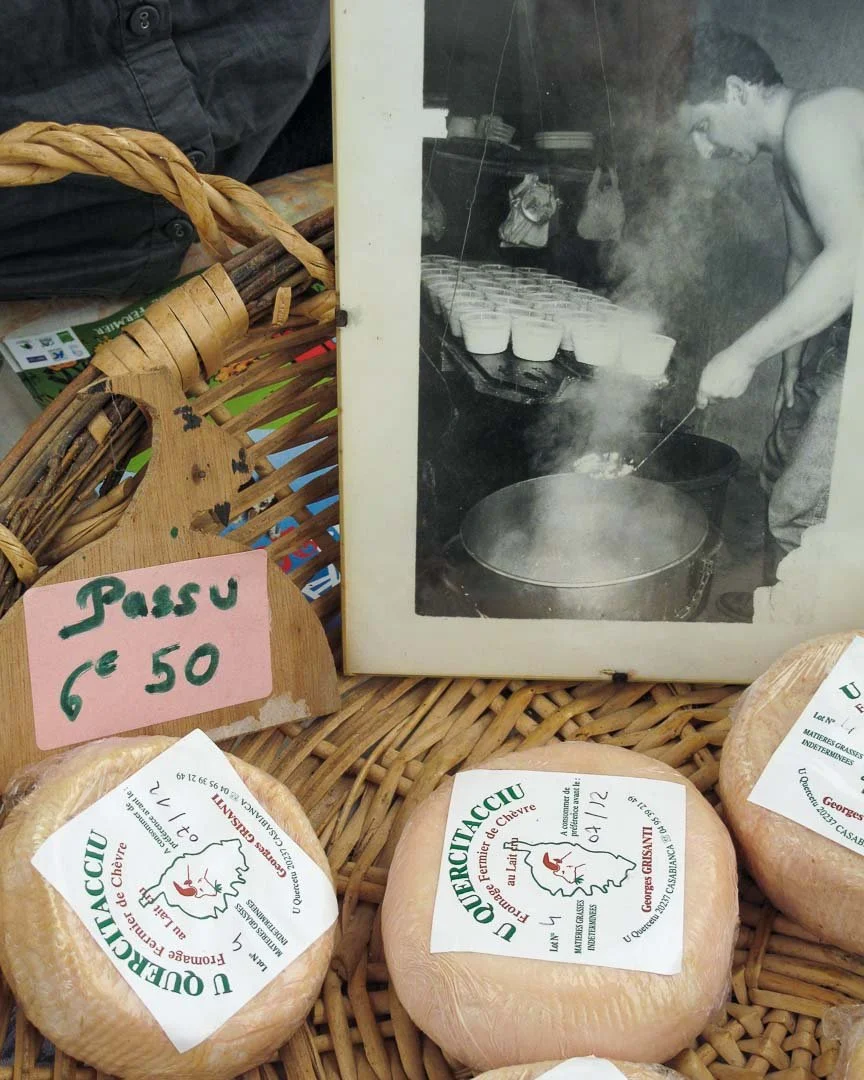My husband and I spent a memorable few weeks on Corsica several years ago, and I fell hard for the island and its cheeses. For good reason, residents refer to their homeland as both the Isle of Beauty and the Island of Shepherds. But when I tried to find similar Corsican cheeses at home, I largely struck out. I might occasionally score some Fleur du Maquis—a lovely creation, although Corsicans don’t eat it—but the rest of the island’s production was nowhere to be found. Until now. I’m beyond delighted to introduce you to Corsu Vecchiu (above), a superb aged sheep tomme from the “Île de Beauté” that takes me right back to that captivating place.
Hiking the shepherds’ trail (that’s me in the sleeveless top)
Corsu Vecchiu (“the old Corsican”) is not that old. The name led me to expect a hard, even brittle cheese—like an aged Manchego—but it’s far from that. The texture is surprisingly tender for a wheel aged at least five months, on the cusp between semisoft and semifirm. The wheel has some give to it. I don’t know how they keep so much moisture in a relatively small (3-3/4 lb) cheese with a natural rind. And what a handsome rind it is—thin and healthy, marked by the draining basket and cloaked with white mold.
I am struggling to find words for why I like this cheese so much. The fragrance is subtle, a mingling of dried herbs, nuts and artichoke. The distributor’s sell sheet says “hazelnut” and I get that. The flavor is sweet and a little bit lemony, with perfect salting. The overall impression is balanced and understated. Perhaps because it doesn’t come on strong, I feel like I could eat half a wheel. It has little of the lanolin scent that turns some people away from sheep cheese. In fact, I can’t imagine who wouldn’t enjoy this cheese, or why they wouldn’t. Black cherry jam is a traditional accompaniment, but I don’t want anything between me and this cheese.
Corsican native: The hardy brebis Corse
The native Corsican sheep—the horned and hardy brebis Corse--is prized for the quality of its milk and its ability to thrive in the harsh mountainous landscape. Shepherds (an endangered profession) still lead their flocks into the mountains in the spring to graze on fresh pasture in a ritual known as transhumance. My husband and I had the opportunity to take a guided hike along one of these steep trails during our visit and to see some of the tomb-like shepherds’ huts from times past. It’s a hard life, and development pressures are making it harder. Corsica is a popular tourist destination—its beaches draw hordes—and builders are rapidly encroaching on agricultural land. By chance, our visit corresponded with a weekend festival celebrating Corsican shepherds and the cheeses they make (images below). Learning that I was a journalist, one shepherd approached me in tears to tell me about losing the lease on her land.
Corsu Vecchiu is produced by the Société Fromagère Corse, a creamery in business for more than a century. It is now owned by Lactalis, the French dairy giant, but it is one of their smallest production sites. During the milking season, roughly October through June, the milk is collected daily from several dozen nearby farms and pasteurized before cheesemaking begins.
Let’s give this cheese a warm welcome so the importer keeps it coming. Look for Corsu Vecchiu at these retail locations.





